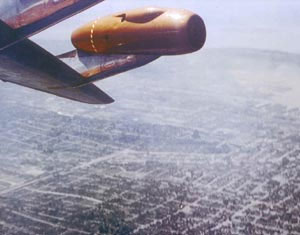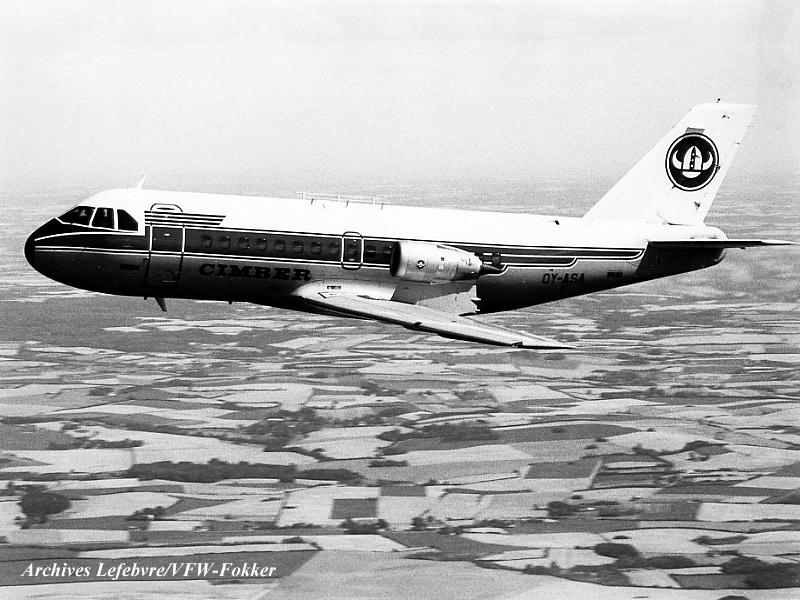
Posted on 08/21/2005 7:21:25 AM PDT by snowsislander

The experimental HondaJet is an advanced, lightweight, compact business jet that features better fuel efficiency, more available space in the fuselage, and higher cruise speed than conventional aircraft in its class. (PRNewsFoto)
OSHKOSH, Wis., July 28 /PRNewswire/ -- With a demonstration flight that
included several flybys and a perfect landing in front of a packed crowd of
aviation enthusiasts, the experimental HondaJet made its public world debut
today at the Experimental Aircraft Association (EAA) AirVenture 2005 in
Oshkosh, Wis. AirVenture is the world's largest annual aviation gathering.
Boasting a number of innovations including a patented over-the-wing
engine-mount configuration, a natural-laminar flow (NLF) wing and fuselage
nose, and an advanced all-composite fuselage structure, the experimental
HondaJet is an advanced, lightweight, compact business jet that features far
better fuel efficiency, more available space in the fuselage, and higher
cruise speed than conventional aircraft in its class. The HondaJet is powered
by two Honda HF-118 engines, each rated at 1,670-pound thrust at takeoff
power.
"This public world debut of the HondaJet represents the continued
advancement of Honda's long-standing dream of aviation," said Michimasa
Fujino, HondaJet project leader and vice president of Honda R&D Americas, Inc.
"We are pleased and excited to be able to share this dream and our technology
with the aviation community."
Honda first announced the achievement of HondaJet in December 2003,
shortly after HondaJet took its first test flight from its base at Piedmont
Triad Airport in Greensboro, N.C.
"HondaJet's construction and testing in the U.S. is also evidence of Honda
R&D's continued growth and deepening roots in America," added Fujino.
The result of 19 years of research on small aircraft, HondaJet includes a
series of innovations. The NLF wing and NLF fuselage nose were developed
through extensive analyses and wind-tunnel testing. These designs help
HondaJet achieve a low drag coefficient.
HondaJet's patented over-the-wing engine-mount configuration helps
eliminate the need for a structure to mount the engines to the rear fuselage
and, thus, maximizes the space in the fuselage. Further, by determining the
optimal position for the engines, the over-the-wing mount actually reduces
drag at high speed to improve fuel efficiency.
The advanced all-composite fuselage structure consists of a combination of
honeycomb sandwich structure and co-cured stiffened panels. It was developed
to reduce weight and manufacturing costs. This experimental aircraft is also
outfitted with a state-of-the-art glass cockpit with an integrated avionics
system, as well as an autopilot function.
To date the HondaJet has completed more than 156 hours of flight-testing
since December 2003. So far it has achieved an altitude of 43,000 feet and a
speed of 393 knots (at ISA+8 degC condition).
Main Specifications
Provisional name HondaJet
Seating 6 (2crew + 4 passengers or 1 + 5)
Engine Honda HF118 Turbofan Engine - x 2
Maximum take-off thrust 757 kgf (1,670 lbf) x 2
Length x width x height 12.5 x 12.2 x 4.1 m (41.1 x 39.9 x 13.2 ft)
Maximum speed 778 km/hr (420 knots)
Operational ceiling 12,497 m (41,000 ft)
Range 2,037 km (1,100 nm)
Honda is one of the world's leading producers of mobility products
including its diverse line-up of automobiles, motorcycles and ATVs, power
products, marine engines and personal watercraft. Honda is the world's
preeminent engine-maker, with annual worldwide production of more than
19 million engines. On a global basis, Honda has more than 130 manufacturing
facilities in 29 nations.
Honda began operations in North America in 1959 with the establishment of
American Honda Motor Co., Inc., Honda's first overseas subsidiary. Honda
began assembling motorcycles in America in 1979, with U.S. automobile
manufacturing starting in 1982. Honda now employs more than 26,000 Americans
in the design, manufacture and marketing of its products in America. Honda
currently builds products in 12 manufacturing plants in North America, with
three major R&D centers in the U.S.
SOURCE Honda
Photo Notes: NewsCom:
http://www.newscom.com/cgi-bin/prnh/20050728/LATH009
http://www.newscom.com/cgi-bin/prnh/20050728/LATH106 AP Archive:
http://photoarchive.ap.org PRN Photo Desk,
photodesk@prnewswire.com

I went to the EAA fly-in sometime around 65/66 (?) with my grandfather. I think it was the year that it was in Rockford, Ill. He had a Benson Gyro-copter and loved to fly that thing.
For anybody who likes airplanes that is one trip you have to make.
I have owned nothing but Honda cars for the last 15 years because they were so well made. And I have done plenty of shopping around too.
My first Honda went 250,000 miles and still ran like new. And I never did anything to it but change the oil regularly.
My latest is a 4 door Civic that gets about 40 miles to the gallon- I fill it up once a month for less than $30
Hope some of the hon-duh faithful are in the US aircraft industry.
We recently traded in a Ford Winstar for a Honda SRV, and love it!
This flying version is a pretty slick looking rig; there might be an increasing market for fast, smaller "general aviation" planes like this for people of means who might not be able to afford a Lear Jet but don't care for the anal exam every time they want to board a commercial flight.
Didn't Mitsubishi make the infamous "Zero" in WW-II?
I'd like to see someone come up with a moderized version of the German jet "Sparrow" (?) that they came up with late in the war; it was a sleek, hot little number that I bet a lot of civilian pilots / former Military JetJocks would have a ball with.
IIRC, it was about the same size as this Honda.


If you want on or off my aerospace ping list, please contact me by Freep mail not by posting to this thread.
Good information here:
http://world.honda.com/news/2003/c031216_2.html
---HondaJet's patented over-the-wing engine-mount configuration helps eliminate the need for a structure to mount the engines to the rear fuselage and, thus, maximizes the space in the fuselage. Further, by determining the optimal position for the engines, the over-the-wing mount actually reduces drag at high speed to improve fuel efficiency. ---
The engine mounts caught my eye. No doubt it makes the craft quieter, too.

I hope they bring it to the National Championship Air Races in Reno next month.
I don't see how the overwing mount of the engines is paptented...wasn't there was a bizjet/small airliner back in the 60's or 70's that had the same thing?
I knew I should have scrolled down further.

I think the related patents might be these, which are more about how to design the mounting with respect to inviscid flow:


Ditto on my experience with Toyota. My 4Runner is still running like new the same as when I purchased it back in 2000, and now with 160,000+ miles. That vs. a previous 'Ford' where the transmission broke at 60,000 miles and that was without and hard driving at all.
Anybody have a cost comparison to the Eclipse jet?
I was commenting as to how Honda got a patent since it had been done before...I guess Fokker never applied for one.
I wasn't commenting about not understanding how it could be patented.
I found this Bloomberg article which quotes an Asahi article giving a price range for the HondaJet of 100 million yen to 300 million yen, or roughly $1 million to $3 million.
Disclaimer: Opinions posted on Free Republic are those of the individual posters and do not necessarily represent the opinion of Free Republic or its management. All materials posted herein are protected by copyright law and the exemption for fair use of copyrighted works.